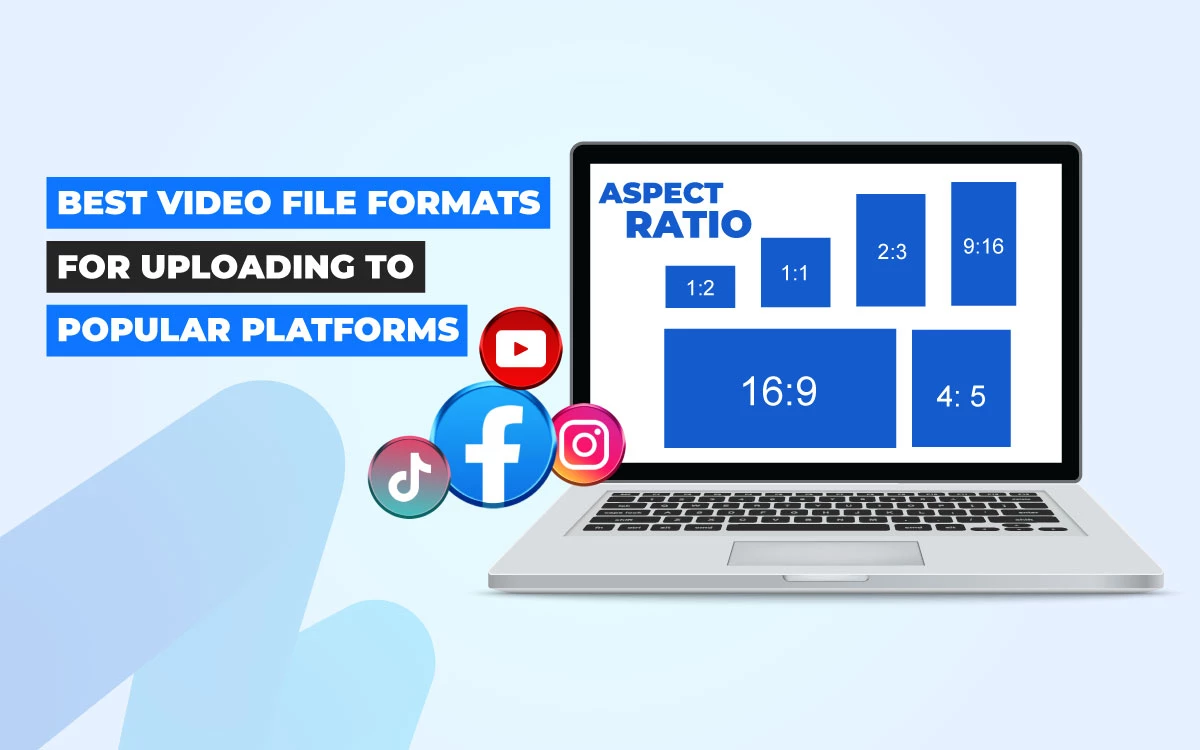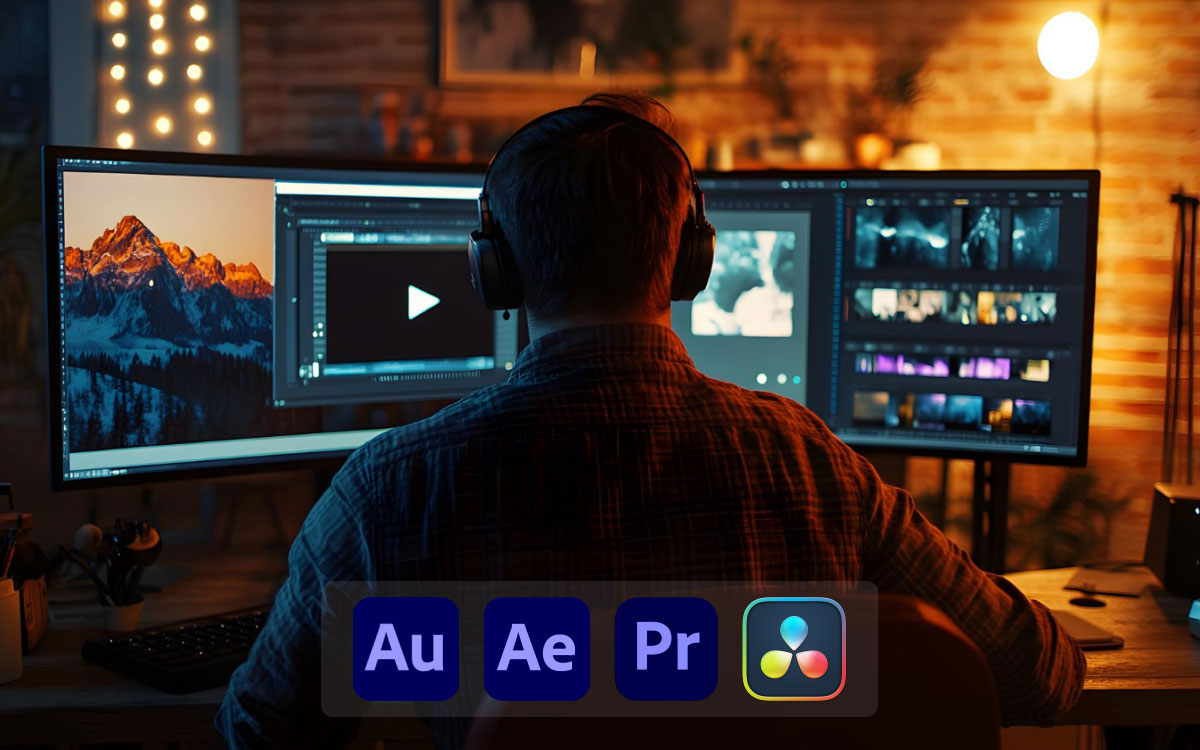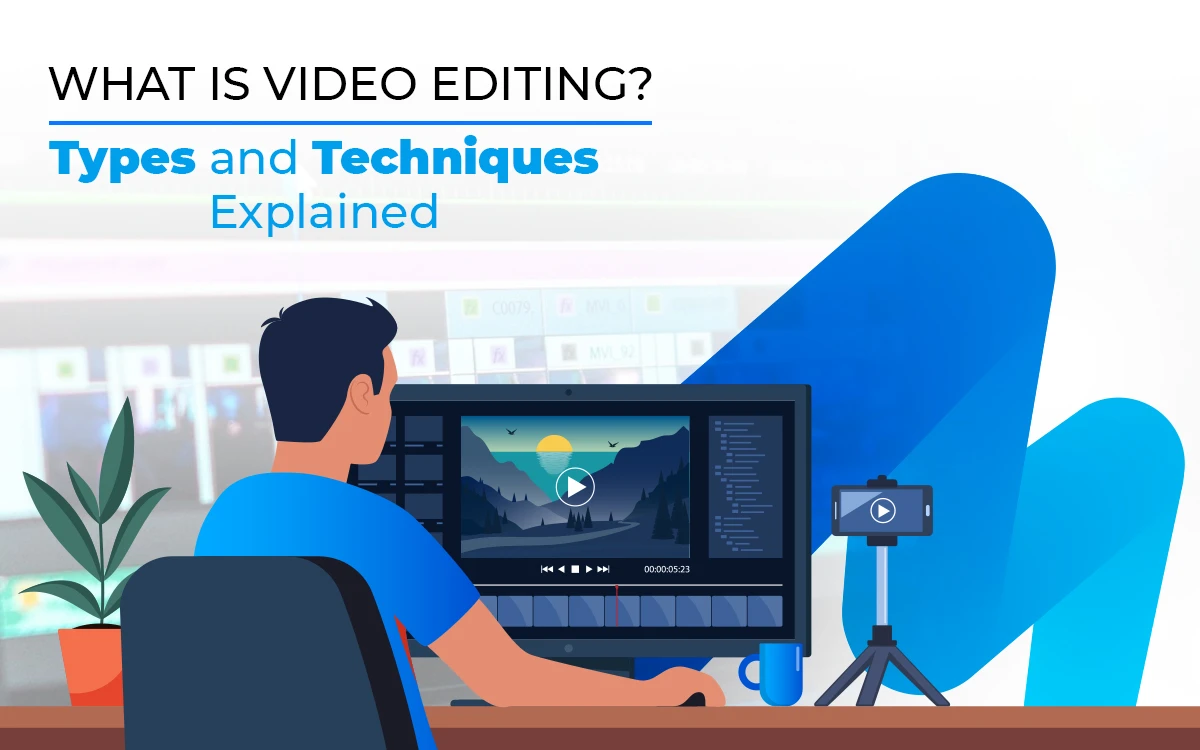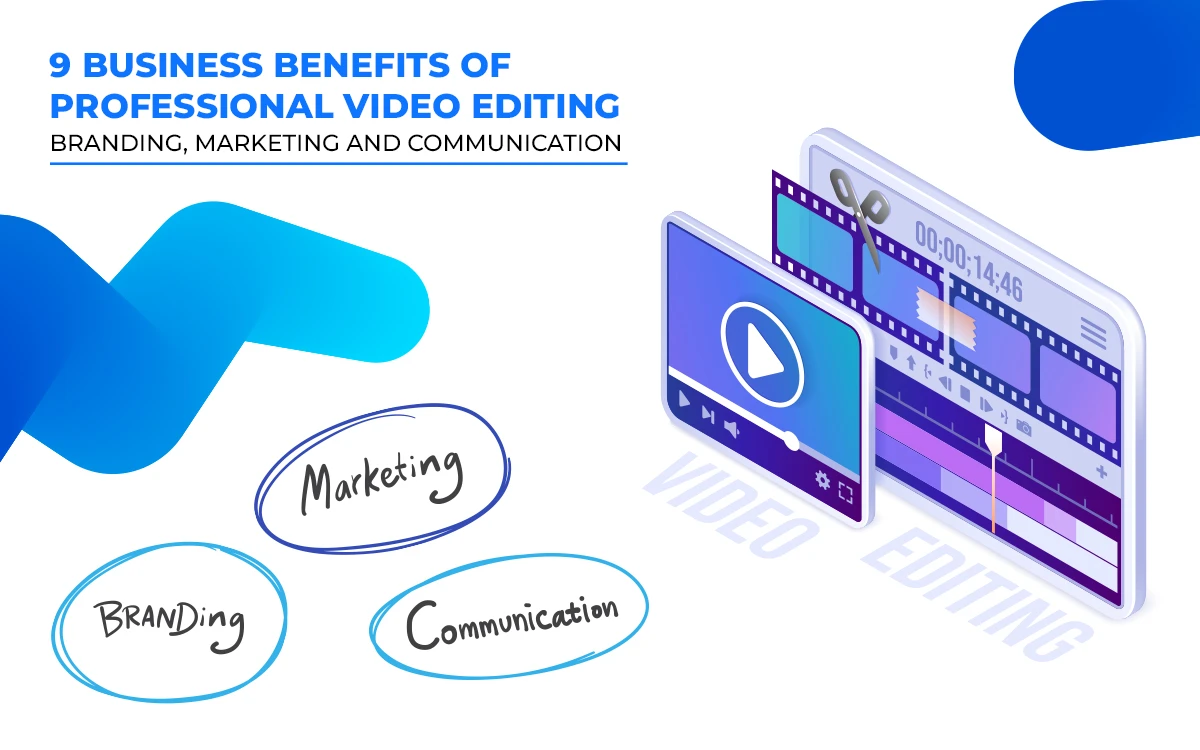The best video file format for uploading to popular online platforms is MP4. YouTube recommends an aspect ratio of 16:9, Instagram and TikTok recommend 9:16, and Facebook allows 16:9, 9:16, and 1:1 with H.264 codec. To match platform-specific requirements during exporting videos, use built-in presets, check audio codec compatibility, optimize bitrate, recheck technical aspects, and test before publishing videos.
What you’ll learn in this article
- 1 Why Choosing the Right Video Format Matters?
- 2 What is the Best Video Format for YouTube?
- 3 What is the Best Video Format for Instagram?
- 4 What is the Best Video Format for TikTok?
- 5 What is the Best Video Format for Facebook?
- 6 Summary Table: Platform-Specific Video File Format Recommendations
- 7 How to Export Videos to Match Platform Requirements?
- 8 FAQ’s About Video Format Uploads
Why Choosing the Right Video Format Matters?
Choosing the right video format matters because of improving cross-device compatibility, avoiding quality loss and playback errors, ensuring fast uploading and processing, aligning with platform-specific compression and algorithm preference, and reducing storage and bandwidth costs. Well-formatted video improves business efforts in marketing the brand and viewers’ experience.
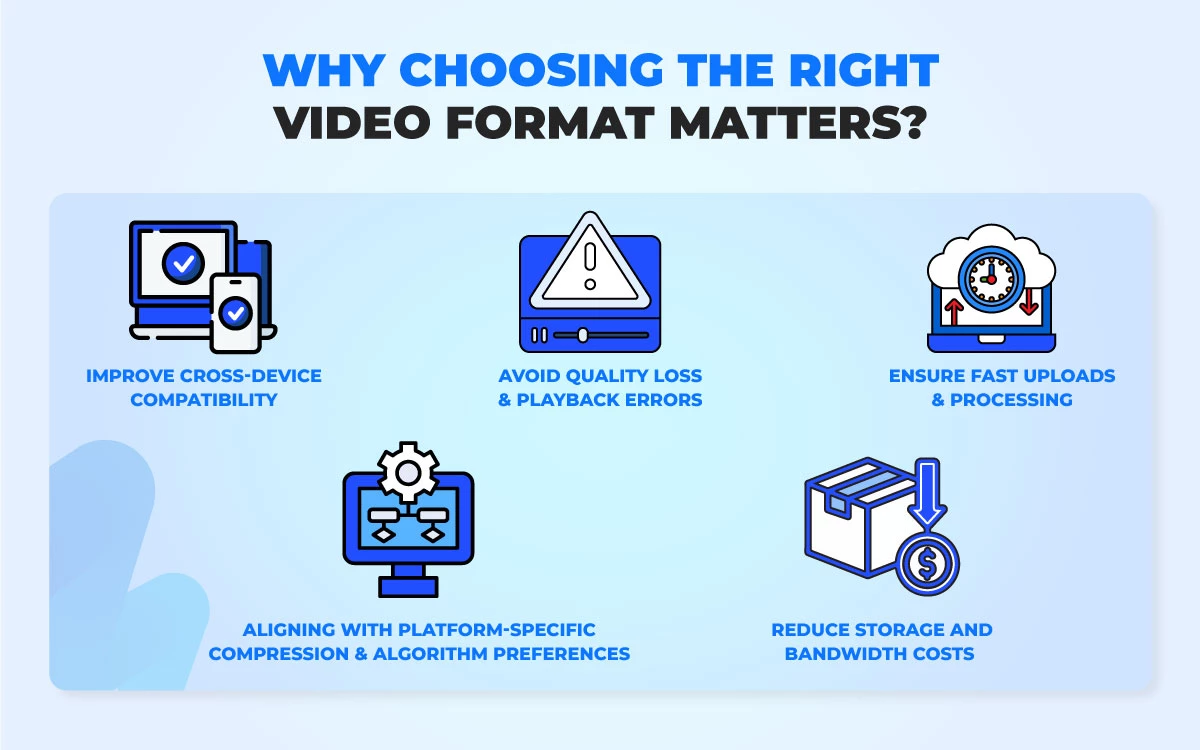
1. Improve Cross-Device Compatibility
Use a universally accepted format, such as MP4, MOV, WebM, etc. It guarantees effortless playback on mobile, PC, TVs, and other operating systems. Also, those formats won’t drive viewers away.
2. Avoid Quality Loss and Playback Errors
Choosing the right format contributes to maintaining sharp visuals in the video without losing data. Video formats such as MP4 with H.264 maintain seamless motion during compression. If not formatted right, there will be artifacts, desync of audio, and color banding that harm the video’s reliability and viewers’ experience.
3. Ensure Fast Uploads and Processing
Selecting the right format to reduce the file size and make it compatible with different social media platforms without losing quality. Such videos upload and process fast on the video publishing platforms, which is essential during an ad campaign or time-sensitive content.
4. Aligning with Platform-Specific Compression & Algorithm Preferences
Each video publishing platform has its unique encoding system. Implement globally preferred formats (e.g., MP4/AAC) so that video compression doesn’t occur, playback quality improves, and the platform’s algorithm prefers.
5. Reduce Storage and Bandwidth Costs
Following the right video formats reduces storage and bandwidth costs for businesses. Efficient codecs, for example, HEVC or H.264, ensure high quality with smaller file sizes. You can save cloud storage fees and lower data usage for both creators and viewers.
What is the Best Video Format for YouTube?
The best video format for YouTube is MP4. The file should have a 16:9 aspect ratio and H.264 codec, according to YouTube Help’s official page. This format size is manageable and high-quality. The platform also allows MOV files. About the video’s frame rates, you can include 24, 25, 30, 48, 50, and 60 fps as per your content for smooth playback. Other frame rates are also accepted.
Maintain a 1080p resolution for video size. As for the audio codec, use AAC-LC or Opus, or Eclipsa Audio for a clear, crisp, and professional sound experience. Following all these settings ensures a fast and smooth upload, processing, and playback across PC and phone.
Best Video Format Settings: YouTube
| Terms | Recommendation by YouTube |
|---|---|
| Container | MP4 (MOV accepted) |
| Aspect Ratio | 16:9 |
| Codec | Audio: AAC-LC or Opus, or Eclipsa Audio |
| Video: H.264 | |
| Frame Rates | 24, 25, 30, 48, 50, 60 FPS, and others |
| Resolution | Minimum 1080p, up to 4K supported |
| Maximum File Size | 256 GB, or 12 hours (whichever is less) |
| Maximum Length | 12 hours per video |
What is the Best Video Format for Instagram?
The best video format for Instagram is MP4 with a 9:16 aspect ratio and H.264 codec, according to Meta’s official ad and business pages. MOV files are also accepted, but are less recommended for large sizes, and are likely to compress. Instagram allows up to 4 GB per upload for video files and 90 seconds for reels, preferring 30 FPS.
Maintain the video resolution of 1080 × 1920 pixels. About the Audio codec, the Meta ads documentation recommended AAC-LC, 48 kHz for industry-standard consistency.
Best Video Format Settings: Instagram
| Terms | Recommendation by Meta/Instagram |
|---|---|
| Container | MP4 (MOV, but large in size and compression issues) |
| Aspect Ratio | 9:16, 1:1 |
| Codec | Audio: AAC-LC at 48 kHz |
| Video: H.264 | |
| Frame Rates | 30 FPS |
| Resolution | 1080p |
| Maximum File Size | Up to 4 GB per video upload |
| Maximum Length | Reels 90s, Feed 60s |
What is the Best Video Format for TikTok?
The best video format for TikTok is MP4 and MOV, with an aspect ratio of 9:16 and a video codec of H.264. Follow 1080×1920 pixels (1080p) resolution for file size to ensure maximum immersive experience. It supports different frame rates, including 24, 25, 30, and up to 60 fps however, 30 FPS is generally recommended.
The platform has limited video upload to 287.6 MB on iOS and 72 MB on Android. But you can extend the video length to 10 minutes for long videos.
Best Video Format Settings: TikTok
| Terms | Recommendation by TikTok |
|---|---|
| Container | MP4, MOV |
| Aspect Ratio | 9:16 |
| Codec | Audio: AAC |
| Video: H.264 | |
| Frame Rates | 24-60 FPS |
| Resolution | 1080 × 1920 pixels |
| Maximum File Size | 287.6 MB (iOS) and 72 MB (Android) |
| Maximum Length | Up to 10 minutes |
What is the Best Video Format for Facebook?
The best video format for Facebook is MP4, with an aspect ratio of 16:9, 9:16, or 1:1, and H.264 codec, which Facebook’s official video requirement page states. Accepted file formats also include 3g2, 3gp, asf, avi, among others. The recommended frame rate is below 30.
Stick to 1080p video resolution. Depending on the device or browser, you can use a higher resolution. Facebook allows a maximum of 10GB and 240 minutes of file size; however, shorter videos perform better in driving engagement.
Best Video Format Settings: Facebook
| Terms | Recommendation by Facebook |
|---|---|
| Container | MP4, MOV |
| Aspect Ratio | 16:9, 9:16, or 1:1 |
| Codec | Audio: AAC-LC, 48 kHz |
| Video: H.264 | |
| Frame Rates | 30 fps |
| Resolution | Minimum 1080p |
| Maximum File Size | Up to 10 GB |
| Maximum Length | Up to 240 minutes |
Summary Table: Platform-Specific Video File Format Recommendations
| Platform | Preferred Format | Codec | Max File Size | Aspect Ratio | Max Length |
|---|---|---|---|---|---|
| YouTube | MP4 | H.264 | Up to 256 GB | 16:9 | Up to 12 hours |
| MP4 | H.264 | 4 GB | 9:16, 1:1 | 15s-90s (varies) | |
| TikTok | MP4, MOV | H.264 | 287.6 MB(iOS) | 9:16 | Up to 10 minutes |
| MP4 | H.264 | 10 GB | 16:9 | Up to 240 minutes |
How to Export Videos to Match Platform Requirements?
You can follow these tips to match social media’s platform-specific video requirements: using built-in export presets in editing software, checking audio codec compatibility, optimizing bitrate for quality and upload speed, rechecking the technical aspects of the video, and testing uploads before publishing videos.
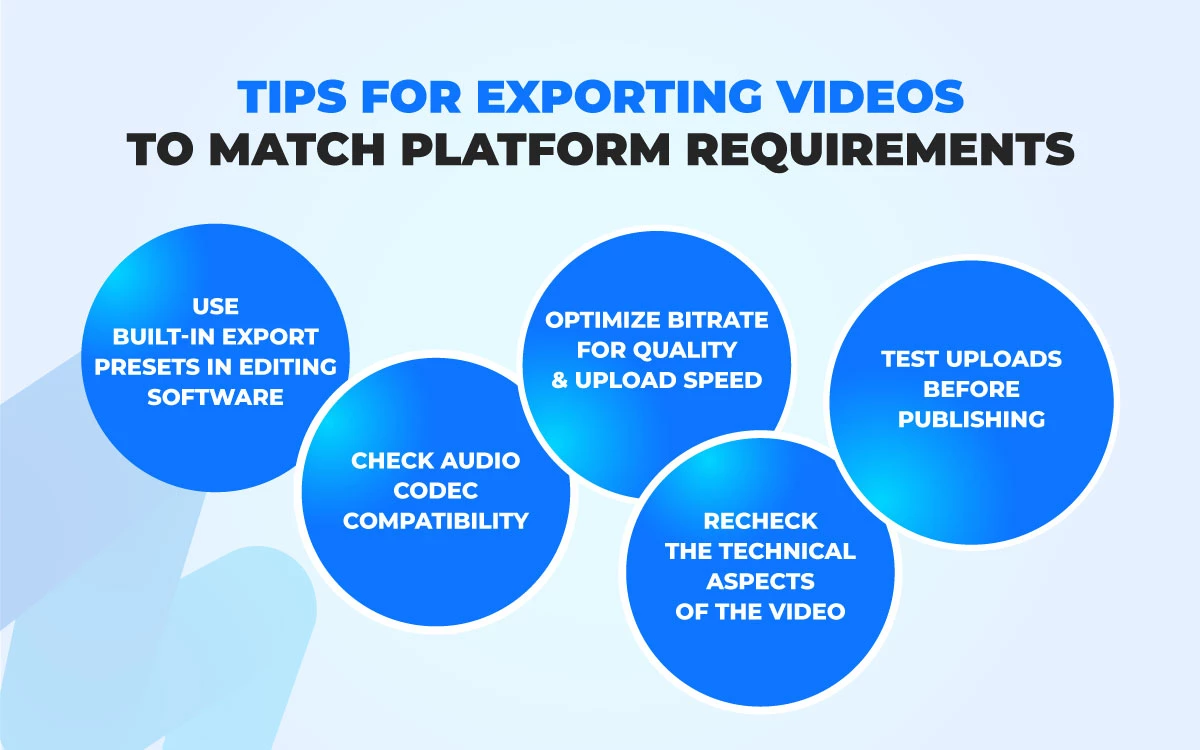
- Use Built-In Export Presets in Editing Software
Industry-grade video editing software such as Adobe Premiere Pro, Final Cut Pro, DaVinci Resolve, and CapCut offers various presets for the social platforms’ videos and reels. Using those presets automatically formats the video in the right aspect ratio, resolution, codec, frame rate, etc. Besides, it saves time and makes sure the video complies with the platform’s technical requirements.
- Check Audio Codec Compatibility
Export video files to an audio format, for example, AAC-LC at 48 kHz or another format that is widely supported and accepted across social media platforms. This will ensure clear sound while keeping the file size. If the audio codec is incompatible, it will cause issues during playback.
- Optimize Bitrate for Quality & Upload Speed
Optimizing bitrate allows you to keep a manageable file size along with the content detail. Also, you can prevent unnecessary compression and quality loss, and speed up the uploading time. YouTube recommends using 8 to 12 Mbps for 1080p video and 35 to 45 Mbps for 4k video uploads.
- Recheck the Technical Aspects of the Video
Trim unnecessary parts, empty frames, and use pre-encoding techniques, for example, color grading, noise reduction, etc. It will limit the file size and ease the compression process. Use a color palette that suits across different screens; for that, use Device Central.
- Test Uploads Before Publishing
Before publishing on the selected platform, upload a private test version. Check how the video will appear across devices, loading time, and running, compression artifacts, audio, and subtitle synchronization with the video, etc.
FAQ’s About Video Format Uploads
The best video format for social media is MP4 with H.264 codec, considering the compatibility and playback performance. This format is high-quality and manageable in file size, which are the reasons most industries use this format to launch their video on social media.
Can I upload MOV files to YouTube or Instagram?
Yes, you can upload MOV files to YouTube or Instagram, with consideration. YouTube supports uploading MOV files without losing quality; however, Instagram prefers MP4 files due to its fast processing and smooth playback. It is recommended to convert MOV to MP4 to receive optimal results.
How do I convert my videos to the right format?
You can convert videos to the right format by using video editing software, such as Adobe Premiere Pro, DaVinci Resolve, Filmor, etc, or use a video converter tool. Select the target format, social platform, adjust resolution, and export. It ensures videos stay in a platform-supported format and in high quality.
Does file size affect upload success or quality?
Yes, file size affects upload success or the quality of the video. Larger-sized files take up more time to upload, and my connection risks failing. Keeping quality and exceeding the recommended file size will create reduced video quality. To ensure fast upload, clear delivery, and improved viewing experience on social media, adjust video bitrate, format, and resolution beforehand.
